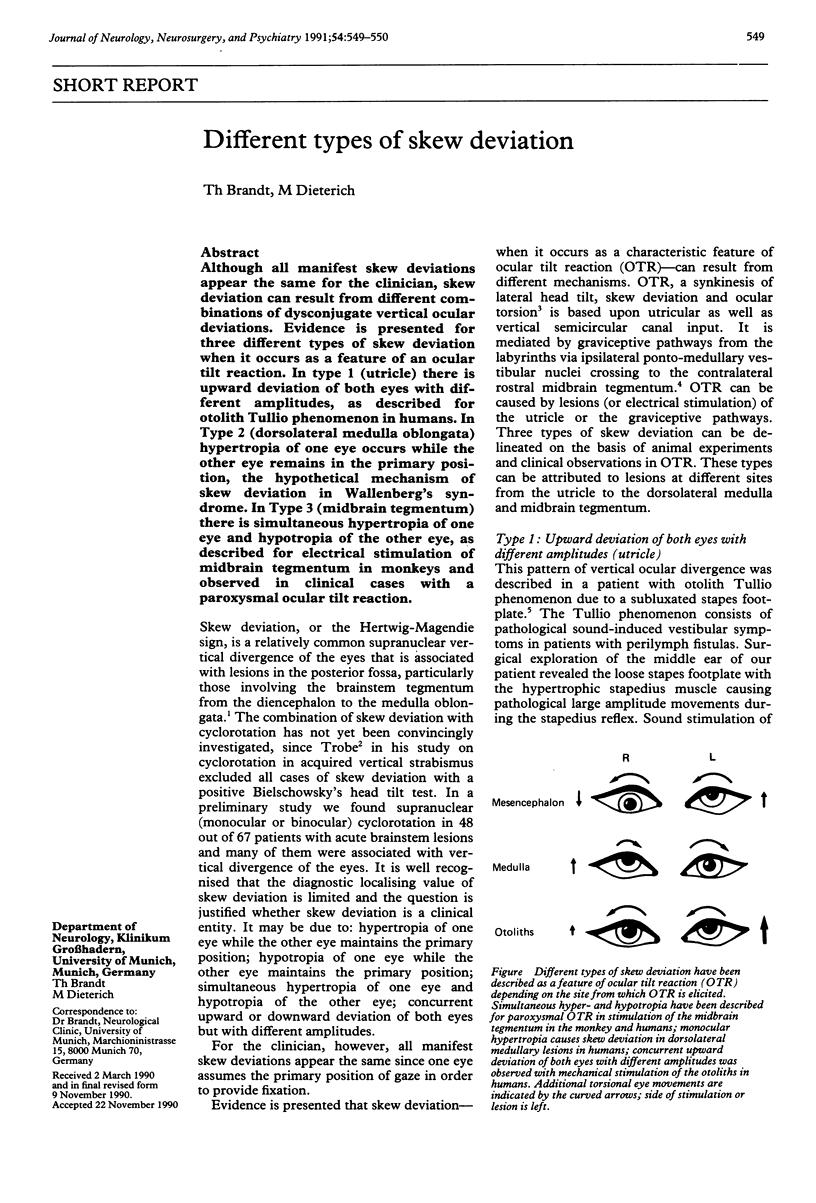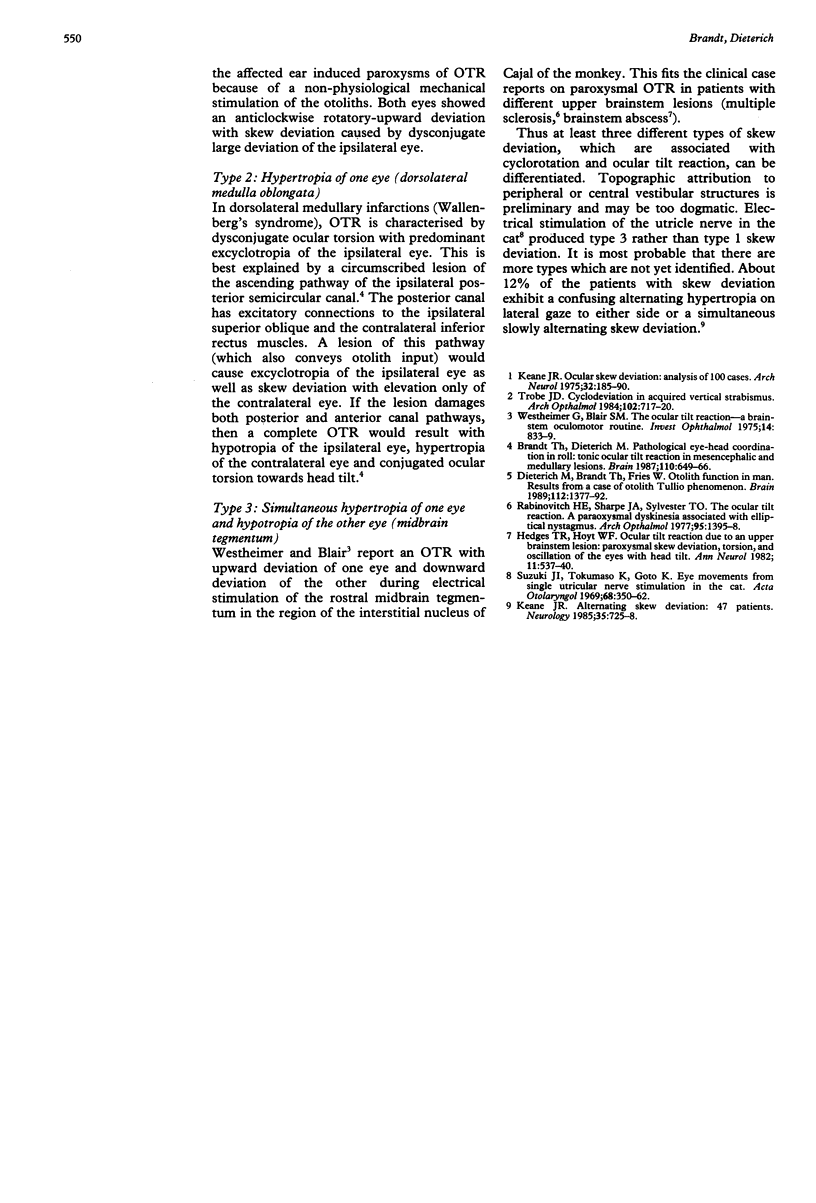Abstract
Although all manifest skew deviations appear the same for the clinician, skew deviation can result from different combinations of dysconjugate vertical ocular deviations. Evidence is presented for three different types of skew deviation when it occurs as a feature of an ocular tilt reaction. In type 1 (utricle) there is upward deviation of both eyes with different amplitudes, as described for otolith Tullio phenomenon in humans. In Type 2 (dorsolateral medulla oblongata) hypertropia of one eye occurs while the other eye remains in the primary position, the hypothetical mechanism of skew deviation in Wallenberg's syndrome. In Type 3 (midbrain tegmentum) there is simultaneous hypertropia of one eye and hypotropia of the other eye, as described for electrical stimulation of midbrain tegmentum in monkeys and observed in clinical cases with a paroxysmal ocular tilt reaction.
Full text
PDF

Selected References
These references are in PubMed. This may not be the complete list of references from this article.
- Brandt T., Dieterich M. Pathological eye-head coordination in roll: tonic ocular tilt reaction in mesencephalic and medullary lesions. Brain. 1987 Jun;110(Pt 3):649–666. doi: 10.1093/brain/110.3.649. [DOI] [PubMed] [Google Scholar]
- Dieterich M., Brandt T., Fries W. Otolith function in man. Results from a case of otolith Tullio phenomenon. Brain. 1989 Oct;112(Pt 5):1377–1392. doi: 10.1093/brain/112.5.1377. [DOI] [PubMed] [Google Scholar]
- Hedges T. R., 3rd, Hoyt W. F. Ocular tilt reaction due to an upper brainstem lesion: paroxysmal skew deviation, torsion, and oscillation of the eyes with head tilt. Ann Neurol. 1982 May;11(5):537–540. doi: 10.1002/ana.410110516. [DOI] [PubMed] [Google Scholar]
- Keane J. R. Alternating skew deviation: 47 patients. Neurology. 1985 May;35(5):725–728. doi: 10.1212/wnl.35.5.725. [DOI] [PubMed] [Google Scholar]
- Keane J. R. Ocular skew deviation. Analysis of 100 cases. Arch Neurol. 1975 Mar;32(3):185–190. doi: 10.1001/archneur.1975.00490450065009. [DOI] [PubMed] [Google Scholar]
- Rabinovitch H. E., Sharpe J. A., Sylvester T. O. The ocular tilt reaction. A paroxysmal dyskinesia associated with elliptical nystagmus. Arch Ophthalmol. 1977 Aug;95(8):1395–1398. doi: 10.1001/archopht.1977.04450080105012. [DOI] [PubMed] [Google Scholar]
- Suzuki J. I., Tokumasu K., Goto K. Eye movements from single utricular nerve stimulation in the cat. Acta Otolaryngol. 1969 Oct;68(4):350–362. doi: 10.3109/00016486909121573. [DOI] [PubMed] [Google Scholar]
- Trobe J. D. Cyclodeviation in acquired vertical strabismus. Arch Ophthalmol. 1984 May;102(5):717–720. doi: 10.1001/archopht.1984.01040030573021. [DOI] [PubMed] [Google Scholar]
- Westheimer G., Blair S. M. The ocular tilt reaction--a brainstem oculomotor routine. Invest Ophthalmol. 1975 Nov;14(11):833–839. [PubMed] [Google Scholar]


